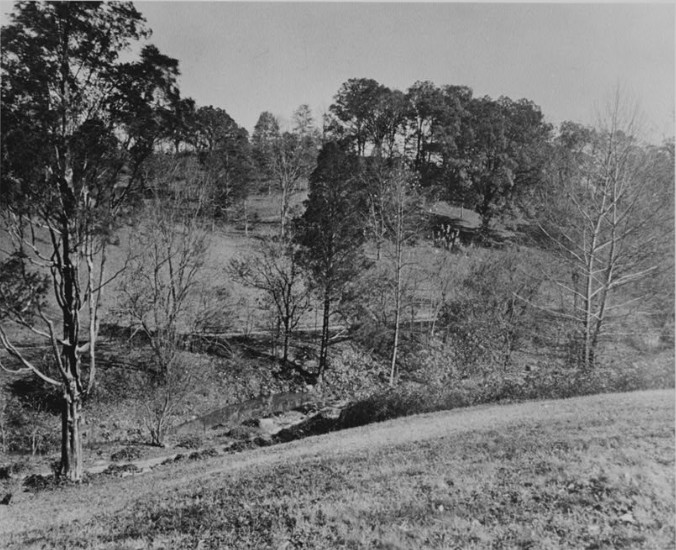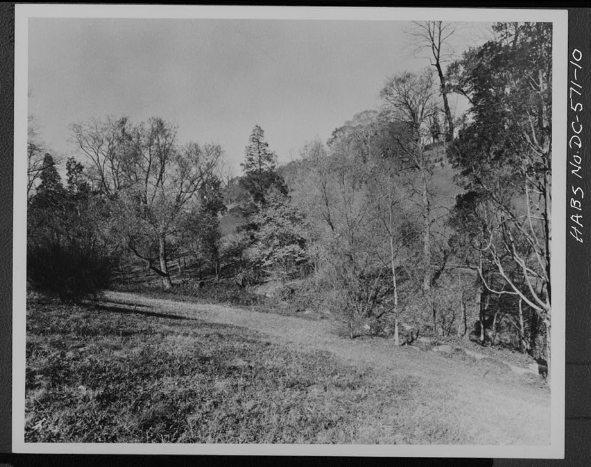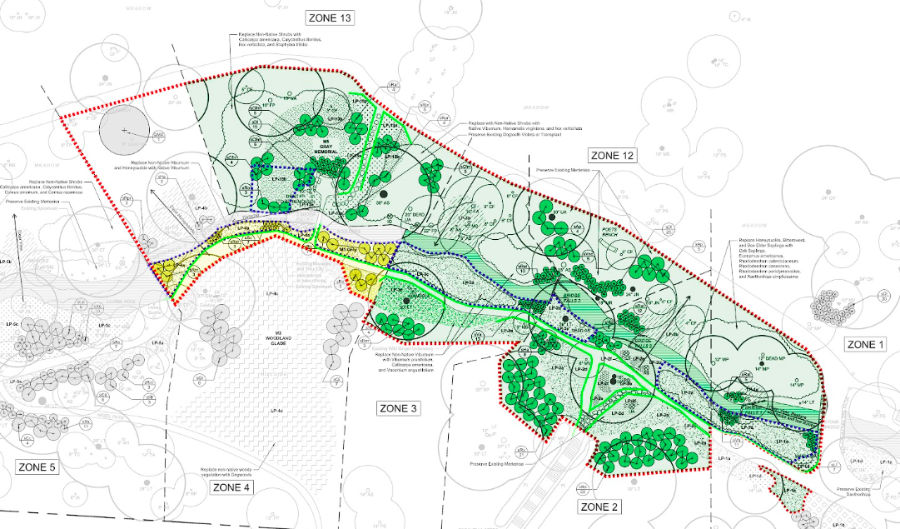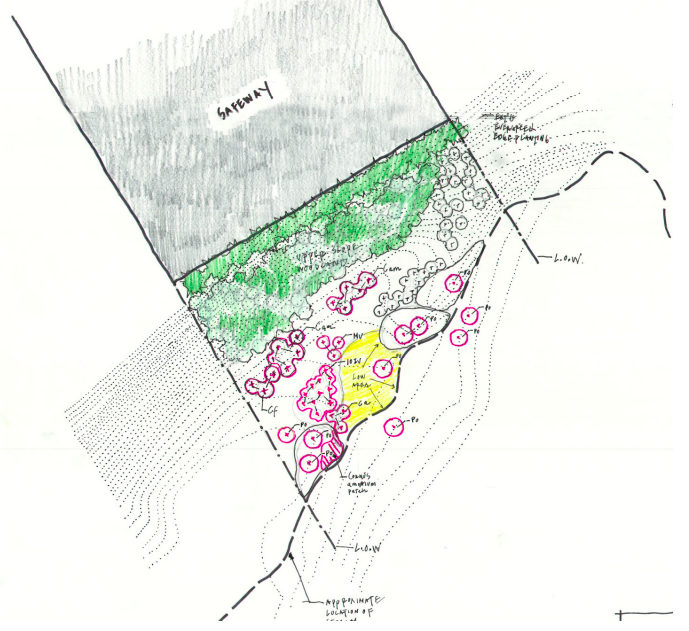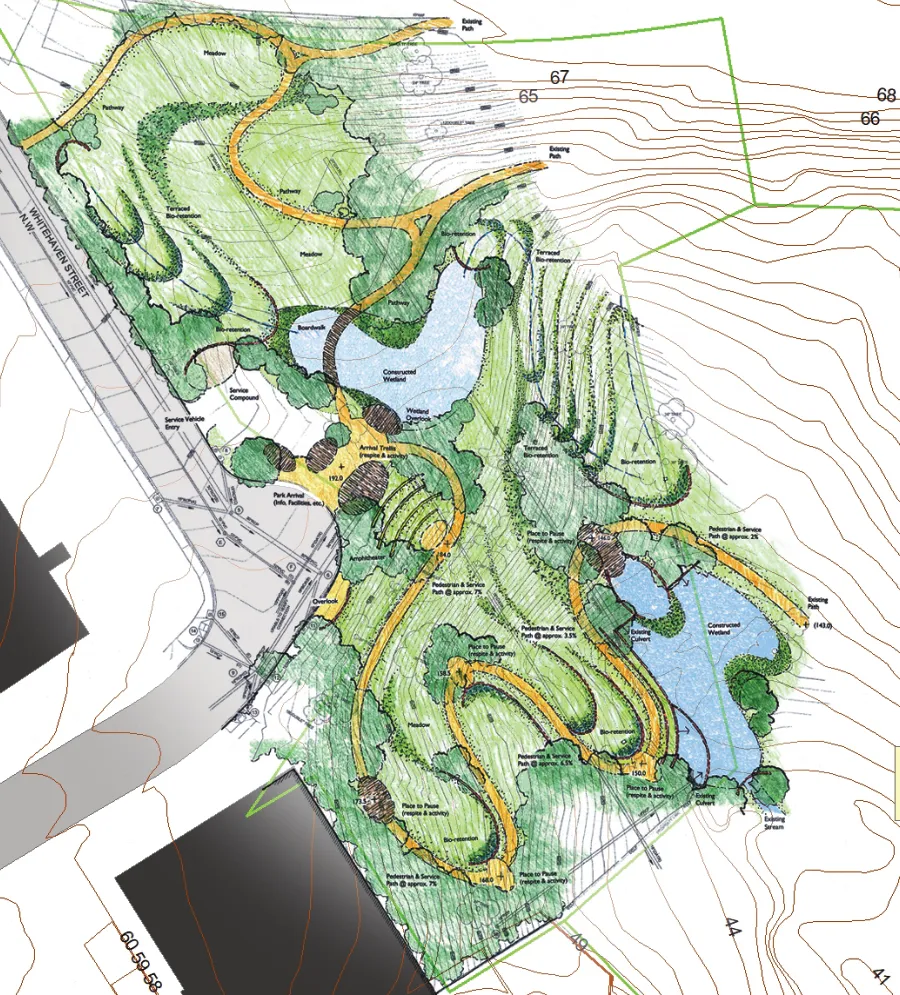Dumbarton Oaks Park Restoration Plan
Lorem ipsum...
Dumbarton Oaks Park Conservancy has initiated a long-term restoration plan for the wild garden portion of Dumbarton Oaks. The DOPC Restoration Plan focuses on the critical protection and restoration of Farrand spaces while promoting historic values, sustainability, accessibility, and diversity.
The phased restoration for the wild garden and built structures of Dumbarton Oaks Park utilizes an adaptive management strategy while engaging visitors to learn from the land. This approach values and optimizes partnerships, neighbors, and the next generation of park stewards. The plan directly supports the integrity and vision of the Beatrix Farrand landscape design.
The Dumbarton Oaks Park Restoration Plan is executed through a Philanthropic Partnership Agreement with the National Park Service with support from the DOPC Advisory Board, Board of Directors and Restoration Committee.
DOPC Restoration Plan Committee
The Restoration Plan Committee is comprised of the following members:
-
Lindsey Milstein, President & Co-Chair
-
Liza Gilbert, Co-Chair
-
Louis Slade
-
George Seltzer
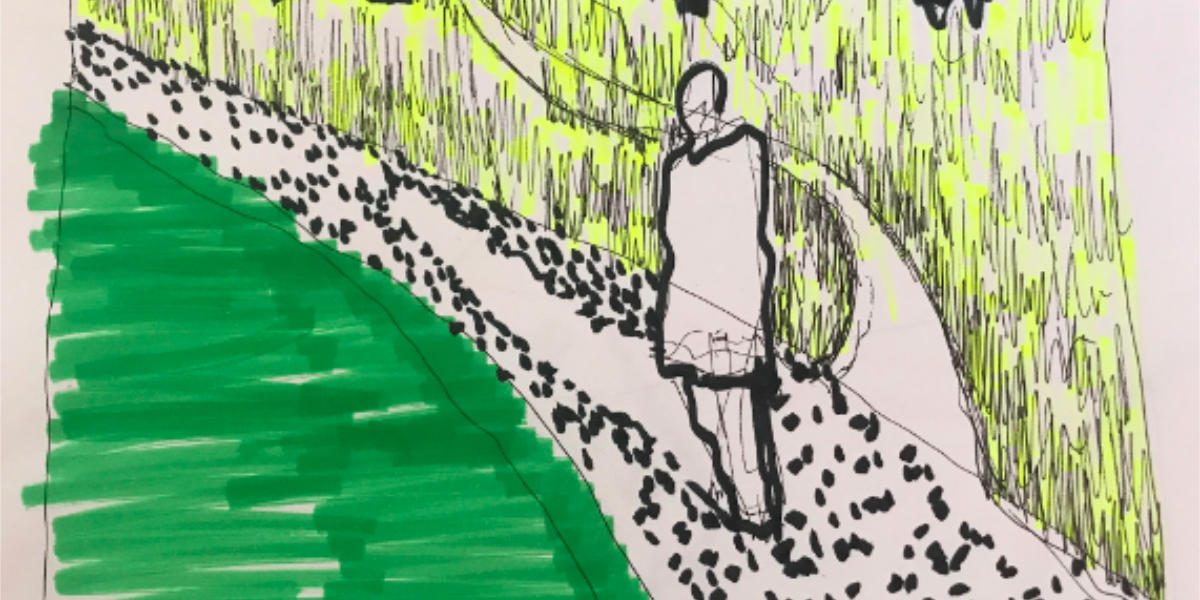
Introduction
Drawing from existing historic documentation and site analysis, the Conservancy’s approach also considers ecology, community, and individual health. Our design strategy is to restore, promote and maintain the complete 27-acre wild garden designed by Beatrix Farrand. The work is being implemented (in three phases):
Phase I: Triage, site analysis, xxxx
Phase II: Accessibility, healing, built structures, xxxx
Phase III: maintenance, interpretation, xxxx
To learn more about the Dumbarton Oaks Park Restoration Plan and how to get involved, please contact DOPC Director of Development at development@dopark.org
Guiding Principles
Historic Restoration of Garden Structures
The Plan follows the historic restoration treatment of the Cultural Landscape Report Dumbarton Oaks Park. Projects including the American Beech Grove and Gray Arbor Memorial evidence the restoration approach. The projects received several awards, including The Citizens Association of Georgetown, 2019 William A. Cochran Award for exceptional efforts to protect and enhance the community’s parkland and architectural resources.
Preservation of Living Landscape
Our iterative approach considers ecology, community and individual health. This means developing a design strategy that not only heals the land but also builds a sense of community; one that brings ecological vitality to the land, engages the public and the surrounding neighborhood with the historic park.
Creation of New Spaces
The Whitehaven west entrance area to Dumbarton Oaks Park is an exceptional community asset that has been unconsidered, neglected, and left to the ravages of time. The land is shrouded in invasive plants and eroded by stormwater, projecting a lack of care and a sense of unwelcomeness. The plan will bring ecological balance and vitality to this important site and in the process, unify it with the surrounding community and historic park. This effort will involve multiple stages of work, starting with a focus on restoring nature.
Expansion of Facilities
The plan addresses the need for a secured service compound that connects to the path network, which is designed to accommodate the width of small electric maintenance vehicles. At a basic level, water and electricity will be included. Special amenities, such as public restrooms, information kiosks, flexible activity pavilions and a small amphitheater set within the hillside of Whitehaven West will be phased in.
Stewardship of Land
The deed of gift from the Blisses to the American people in 1941 was and continues in our work to be centered on the deep sense of purpose in public land stewardship. In this tradition, as we steward this wild garden back to health, we are training the next generation of land stewards. The master plan will grow DOPC stewardship programs and restore the built structures and includes universal access to the park at Whitehaven West entrance.
Community Engagement
DOPC recognizes the importance of the place and the community of Dumbarton Oaks Park. As the stewards of one of great American gardens in the United States, DOPC has the responsibility to both restore Beatrix Farrand’s built structures as she intended and maintain and enhance the qualities of the landscape they help to define. All of DOPC programs and practices promote civic participation in the park restoration and rehabilitation, programming, and stewardship processes.
PLACE MAKING - Project Profiles
Project Team
Larry Weaner Landscape Associates
Landscape Design Firm
Glenside, Pennsylvania
Waters Craftsmen
Architectural Conservation
Huntly, Virginia
David Kamp, Dirtworks Landscape Architecture
Landscape Design Firm
New York, New York
Institute for Human Centered Design
Human Centered Design Firm
Boston, Massachusetts
Funding
Supporters of the Dumbarton Oaks Park Restoration Plan ensure the legacy of Beatrix Farrand's work in Georgetown, Washington, DC. DOPC is pleased to recognize generous donors to the plan, and thank them for their leadership and support. For more information on how to donate to the Dumbarton Oaks Park Restoration Plan, including tickets to the Annual Benefit Dinner, please contact DOPC Director of Development, at Development@DOPark.org.
Support Dumbarton Oaks Park Conservancy today.
Major Supporters
John Doe
John Doe
John Doe
John Doe
Government & Foundation
National Park Foundation
National Environmental Education Foundation
The Morris and Gwendolyn Cafritz Foundation
National Trust for Historic Preservation
Corporate
John Doe
John Doe
John Doe
John Doe
Leadership Supporters
John Doe
John Doe
John Doe
John Doe
Patron Supporters
John Doe
John Doe
John Doe
John Doe
To learn more about Dumbarton Oaks Park Conservancy and how to get involved, please contact DOPC Director of Development, at Development@DOPark.org.


